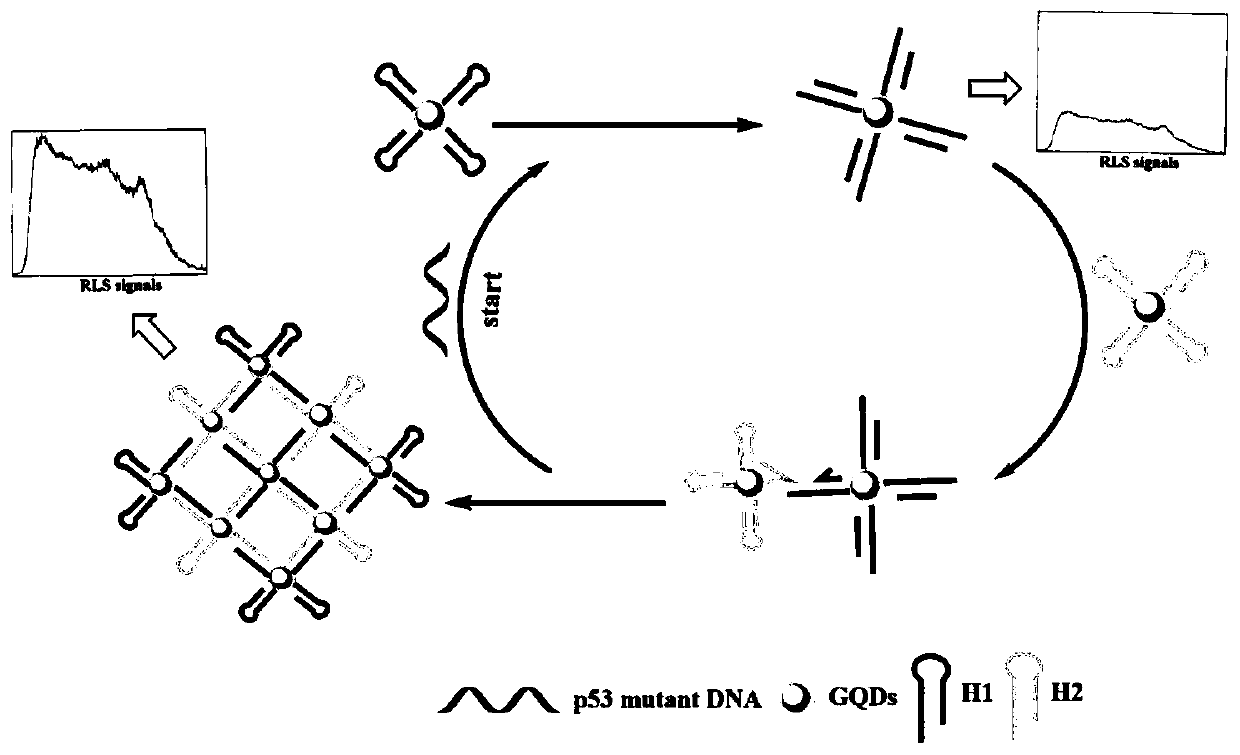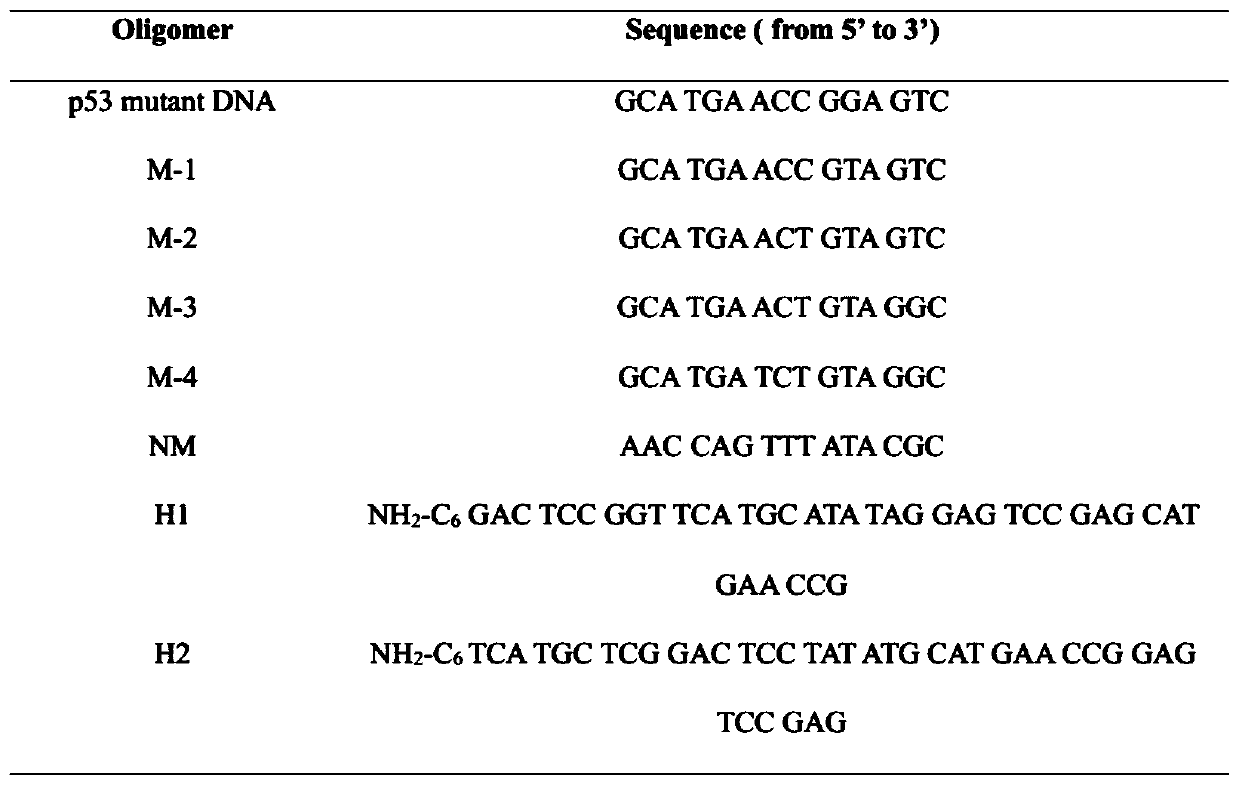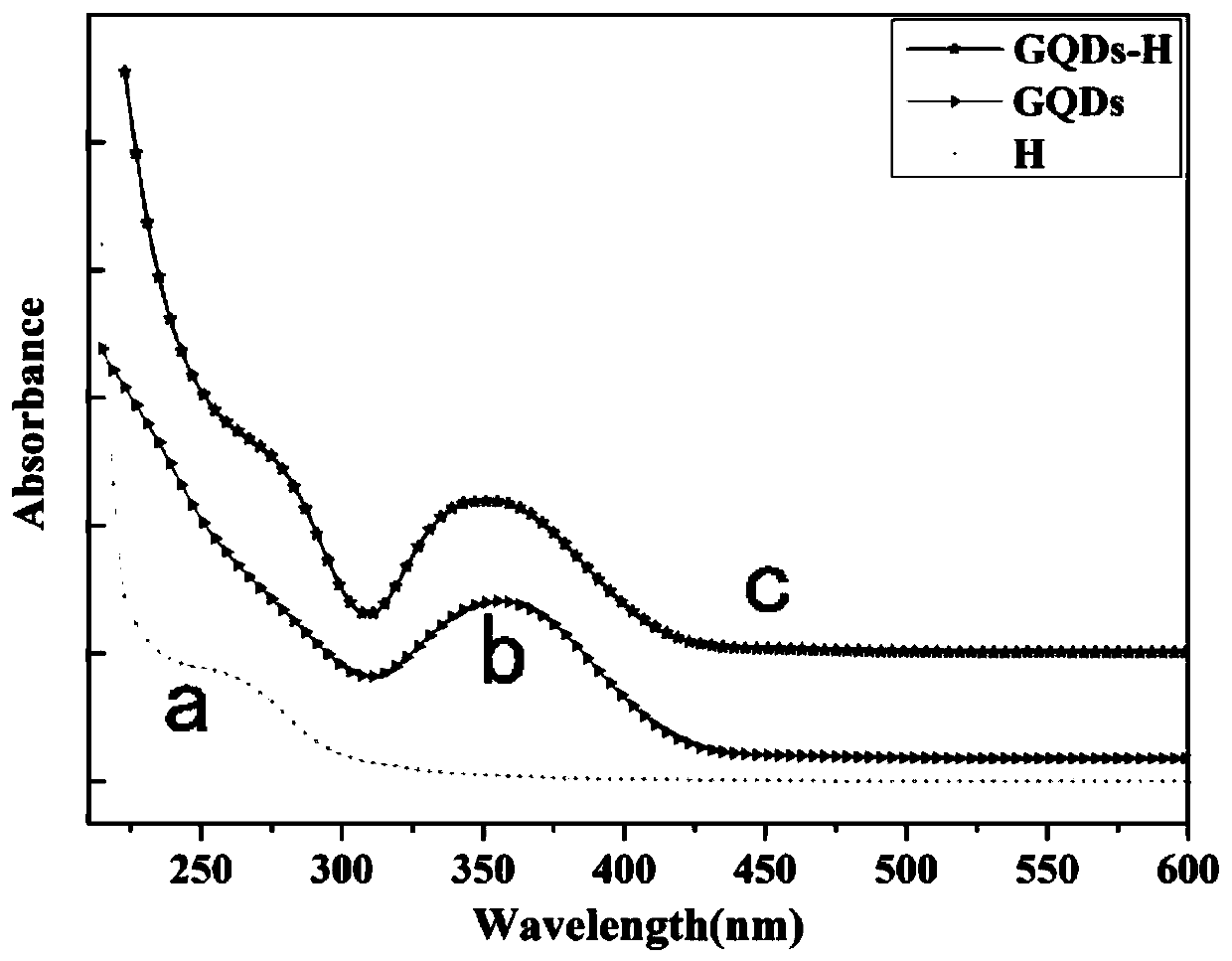Method for quantified detection of mutation DNA through combination of resonant light scattering probe with CHA technique based on GQDs
A resonant light scattering and quantitative detection technology, applied in the measurement of scattering characteristics, the determination/inspection of microorganisms, biochemical equipment and methods, etc., can solve the problems of complex detection process, long detection time, and high detection cost, and achieve simple detection equipment. , The effect of short detection time and high sensitivity
- Summary
- Abstract
- Description
- Claims
- Application Information
AI Technical Summary
Problems solved by technology
Method used
Image
Examples
Embodiment 1
[0037] Feasibility verification of a GQDs-based resonance light scattering probe combined with CHA technology in the quantitative detection of mutant DNA
[0038] (1) Resonant light detection of p53 mutant DNA
[0039] Add GQDs-H1 and GQDs-H2 (GQDs: 90ng / mL; H1, H2: 120nM) into 10mM PBS, add different concentrations of target substances, and react at 37°C for 1h. Finally, the resonance light spectrum of the resulting reaction solution was obtained by synchronously scanning the excitation and emission monochromator (λex=λem) from 220.0 nm to 700.0 nm with an RF-5301PC fluorescence spectrophotometer (Shimadzu, Japan). Excitation and emission slit widths were set to 3.0 nm.
[0040] (2) Determination of absorption spectrum
[0041] The combination of amino-modified hairpin H and graphene quantum dots was detected with a UV-2450 spectrophotometer (Shimadzu, Japan). Absorption spectra were acquired in the wavelength range of 200-600 nm in a quartz cuvette with a path length of 1.0...
Embodiment 3
[0050] Optimization of a GQDs-based resonance light scattering probe combined with CHA technology for quantitative detection of mutant DNA
[0051] The detection efficiency of this method is affected by factors such as the concentration of graphene quantum dots (GQDs) and hairpin H, as well as the reaction time and operating temperature. Through optimization, the best experimental conditions were obtained: the concentration of graphene quantum dots (GQDs) was 90ng / mL, the concentration of hairpin H was 120nM; the reaction time was 60 minutes; the best reaction temperature was 37℃.
Embodiment 4
[0053] Sensitivity determination of a GQDs-based resonance light scattering probe combined with CHA technology in the quantitative detection of mutant DNA
[0054] A series of different concentrations of p53 mutant DNA was added together with the probe and signal was obtained under optimal conditions. Such as Figure 10 As shown in A, the strongest RLS band was observed at 460 nm, and the resonance optical spectrum gradually increased with increasing p53 mutant DNA concentration. Such as Figure 10 B and 10C, in the two linear ranges, ΔI RLS The value of increases with the target concentration from 1 pM to 50 nM. The correlation equation of the curve in the range of 1pM-1.5nM is ΔI RLS =0.2123C+37.39(R 2 =0.9962), in the range of 1.5nM-50nM ΔI RLS =163.8logC-173.4(R 2 =0.9951)(ΔI=I-I 0, I, I 0 are the resonance light intensities of adding p53 mutant DNA and not adding p53 mutant DNA, respectively). The limit of detection was 0.8 pM (3σ).
PUM
 Login to View More
Login to View More Abstract
Description
Claims
Application Information
 Login to View More
Login to View More - R&D
- Intellectual Property
- Life Sciences
- Materials
- Tech Scout
- Unparalleled Data Quality
- Higher Quality Content
- 60% Fewer Hallucinations
Browse by: Latest US Patents, China's latest patents, Technical Efficacy Thesaurus, Application Domain, Technology Topic, Popular Technical Reports.
© 2025 PatSnap. All rights reserved.Legal|Privacy policy|Modern Slavery Act Transparency Statement|Sitemap|About US| Contact US: help@patsnap.com



